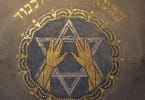Egypt’s Ministry of Antiquities on Monday announced the opening of Pharaonic tombs to tourists after restorations had been completed.
In a press statement, Antiquities Minister Zahi Hawass said the tombs date back to Egypt’s New Kingdom period (1569 to 1081 BCE) and include the tomb of Horemheb, a general who seized power at the end of the Eighteenth Dynasty, and the tomb of Maya, King Tutankhamun’s treasurer.
Maya and Horemheb were important figures during one of Egypt’s most tumultuous periods, the Amarna period.
During this time, the pharaoh Akhenaten closed Egypt’s most important temples in Luxor and moved the capital to a site in the middle of the desert called Akhetaten, or Tell al-Amarna. He even changed the principal state god from Amun to the sun disk, Aten. When Akhenaten died, his son Tutankhamun became king.
Tutankhamun decided he would restore order to Egypt by moving the religious capitol back to Luxor, reinstating Amun and abandoning Tell al-Amarna. In order to make these changes, he needed the assistance of his treasurer and general.
Maya, the treasurer, was essential in restoring Egypt to its pre-Amarna state. He helped the king reopen the Luxor temples and build new temples and shrines to Amun, all to show Tutankhamun was dedicated to restoring order in Egypt. Maya handled domestic order, while Horemheb worked on order abroad.
Though Maya’s tomb was never finished, visitors can now see its mudbrick pylon with spectacular relief fragments as well as courtyard images of Maya and his wife Merit – also buried in the tomb – receiving offerings.
The other tombs now open to the public include those of:
Merneith – A steward and scribe for the Temple of Aten during Akhenaten’s reign, Merneith later became the high priest of Aten and the Temple of Neith. His tomb is built with mudbrick encased in limestone blocks. The back of the temple has three chapels for offerings. A central chapel has a scene of metal workers and contains the bases of two small columns, where a mudbrick pyramid might have stood.
Ptahemwia – Ptahemwia, called the “Royal Butler, One of Clean Hands,” served both Akhenaten and Tutankhamun. He was responsible for bringing the king food and drink, and his tomb calls him “Beloved of the King.” It is also made of mudbrick encased in limestone and contains three chapels. Excavators found 56 coffins from the New Kingdom era, most of which contained the bodies of children affected by disease.
Tia – Tia was one of the top officials under Ramses II as well as overseer of the treasury. He married one of Ramses’ sisters, also named Tia. Tia’s tomb was also used as a mortuary temple to the god Osiris and contains depictions of Tia and his wife making a pilgrimage to Abydos, the Osiris cult center.
Pay and his son Raia – Pay oversaw the harem under Tutankhamun. His tomb consists of a chapel opening onto a pillared court with three offering chapels. Pay’s son, Raia, began his career as a soldier but took over his father’s post after his death. Raia added a courtyard and two stelae and renovated the tomb before he himself was buried there. The stelae were taken to Berlin when Egyptologist Karl Richard Lepsius discovered them in 1928.
Hawass said the restoration project included detailed renovation and architectural work and the return of some artifacts to their original places. He said the ceilings and walls of all the tombs were covered with plexiglass to protect the carvings and colors, particularly those of Maya and Tia, due to the large numbers of tourists visiting these two tombs.
He added that the ministry’s enterprise sector installed wooden and metal doors to protect the tombs, and stone walkways were built to facilitate access.
WHAT TO TAKE AWAY FROM THIS ARTICLE:
- In a press statement, Antiquities Minister Zahi Hawass said the tombs date back to Egypt’s New Kingdom period (1569 to 1081 BCE) and include the tomb of Horemheb, a general who seized power at the end of the Eighteenth Dynasty, and the tomb of Maya, King Tutankhamun’s treasurer.
- He said the ceilings and walls of all the tombs were covered with plexiglass to protect the carvings and colors, particularly those of Maya and Tia, due to the large numbers of tourists visiting these two tombs.
- Tia's tomb was also used as a mortuary temple to the god Osiris and contains depictions of Tia and his wife making a pilgrimage to Abydos, the Osiris cult center.






















